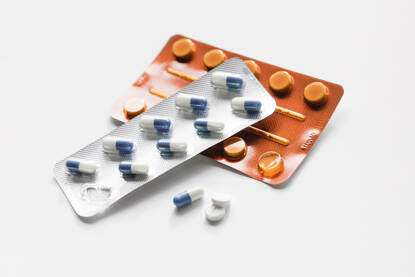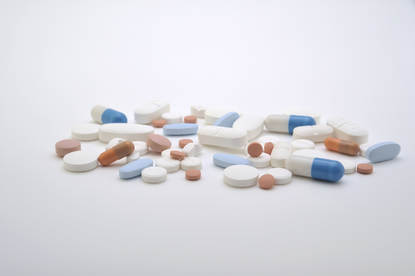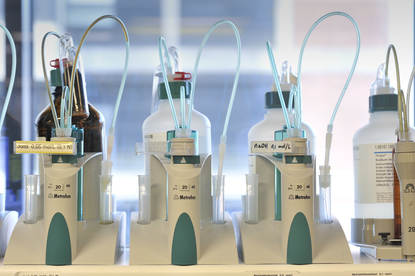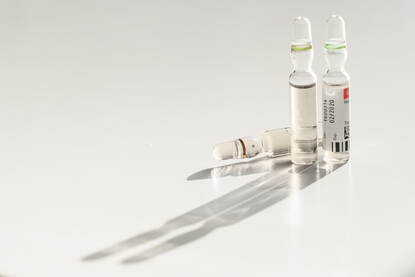The Pharmacovigilance Risk Assessment Committee (PRAC) of the European Medicines Agency was established nine years ago after new European pharmacovigilance legislation took effect. Sabine Straus, PRAC member from the start, looks back ánd ahead into what has happened and still is changing in pharmacovigilance over the years.
MEB Science Day 2021
Interested in 25 years of Pharmacovigilance? Don't forget to read the overview article about the MEB Science Day 2021!
The year 2012 marked the establishment of the PRAC. Pharmacovigilance was, however, not a new thing at that time. “In the years before, the task of monitoring post marketing safety of medicines was assigned to the Committee for Medicinal Products for Human Use (CHMP)”, Sabine explains. “The CHMP is the agency's committee responsible for providing all opinions on issues regarding medicinal products for human use. A wide range of tasks, which sometimes was challenging for one committee to conduct.”
The benfluorex scandal
The need for a broader European perspective on pharmacovigilance was indirectly made clear by a scandal in France, concerning a diabetic medicine called benfluorex. “This medicine, branded Mediator, had been on the market across Europe for several decades. The medicine was also prescribed off-label as a weight loss adjuvant. However, Mediator was found to cause severe heart valve problems”, Sabine explains. “Despite the efforts of a French doctor seeking understanding for this severe adverse reaction, local authorities did not see the need to investigate this any further. Several other European countries had already banned the drug from their markets almost a decade earlier.”
The scandal led to many discussions, also at a European level. “How is it possible that the same drug is banned for serious adverse reactions in one country and not in the other? Why isn’t that information shared across borders? Eventually this led to the new pharmacovigilance legislation that took effect in 2012.”

A broader definition
The new legislation broadened the definition of adverse reactions, Sabine explains. “For instance adverse reactions that occur outside the licensed Summary of Product Characteristics should be reported. And regulations for PSURs (Periodic Safety Update Reports) became stricter. PSUR’s are pharmacovigilance overviews that provide an evaluation of the risk-benefit balance of medicinal products after their authorisation.” Another important consequence from the new legislation was the instatement of the PRAC. Sabine: “There already was a pharmacovigilance working party in place focusing on safety. However, as an independent committee, the PRAC has a much broader mandate to operate and give advice and recommendations.”
Do we see an effect of those measures? Absolutely. Sabine: “The attention for signals and signal detection has increased a lot. Since then, routine based signal detection has come in place, detecting signals based on periodical data mining. Eudravigilance, the European database, is widely used by local authorities, pharmaceutical companies and other organisations (such as the Dutch Pharmacovigilance Centre Lareb in the Netherlands). In an overview article we published in 2019, it was calculated that the PRAC had in its first six years reviewed over 26,000 potential signals, resulting in the issue of 453 recommendations. More than half of those led to drug labelling changes.”
'Spontaneous reports of adverse events will remain an important tool and smarter and more efficient ways of collecting them will take flight.'
Automating processes
The new approach has clearly demonstrated the ability to detect and manage safety signals in an efficient and prompt way. What also helps is automation. Sabine: “An important step forward is the progress made in automating processes for reporting, storing and ‘mining’ data for safety signals. Algorithms are being used a lot more, to detect and evaluate. This leads to much more and much more decision relevant information.”
Looking ahead, Sabine sees several developments in the coming years. “Spontaneous reports of adverse events will remain an important tool and smarter and more efficient ways of collecting them will take flight. Currently, telephone apps to collect data directly from patients and doctors are being tested . Another important development is the increasing amount of interaction with patients and health care professionals . Involving patients and healthcare professional even more will be key in receiving more complete information and take appropriate actions.”

Interested in Sabine's presentation? You can find the PDF here.
Signals and response
Another thing that will change in the coming years is the way regulatory decisions will find their way into the healthcare systems , Sabine thinks. “What will happen in daily practice? We can suggest a change in product information, adding for instance a contra-indication to a certain medicine. But what will be the effect of that? Will it not be prescribed anymore in patients with this contra-indication? We need to stay in touch to assess that as well.”
“What certainly will help in this are new developments in big data. That is where the exciting things are happening at the moment. Everybody can understand that more data might lead to more information, but technology is important too. Because conversion of data into information and knowledge is essential. Reports of adverse reactions on their own are not information. And we need information that is relevant to decision making.”
Sabine mentions the news from Norway several weeks ago, about fatal cases in elderly people after vaccination which was picked up in the media. “These cases needed further context – very old frail people with comorbidities, some in palliative care. Their passing is sad, but not necessarily caused by the vaccines. That data needs the proper context to put the reports into perspective.” In all, the corona situation speeds up pharmacovigilance efforts enormously, Sabine thinks. “The importance of monitoring vaccinesas well as medicines after they have been introduced to the market is important. Especially with the vaccines in view of the large scale of vaccination. This pandemic leads to greater international cooperation. Sharing pharmacovigilance data and cooperating on a European level is smart and efficient. Because we share data, we can acquire information and knowledge from larger data sets.”
“Finally, an important thing we should always keep in mind is how adverse reactions influence the quality of life of patients. And that benefits and risks can differ on a personal perspective from patient to patient. For the treating physician it is important to look at the benefit-risk balance from a specific patients’ perspective at all times!”
About PRAC
PRAC is the Pharmacovigilance Risk Assessment Committee. This European committee is responsible for assessing and monitoring the safety of human medicines.
The committee meets monthly (at the offices of the European Medicines Agency in Amsterdam). On the agenda are discussions about signals, Periodic Safety Update Reports (PSUR’s) and Risk Management Plans, which contain plans for monitoring and follow up after market authorisation and advice.









